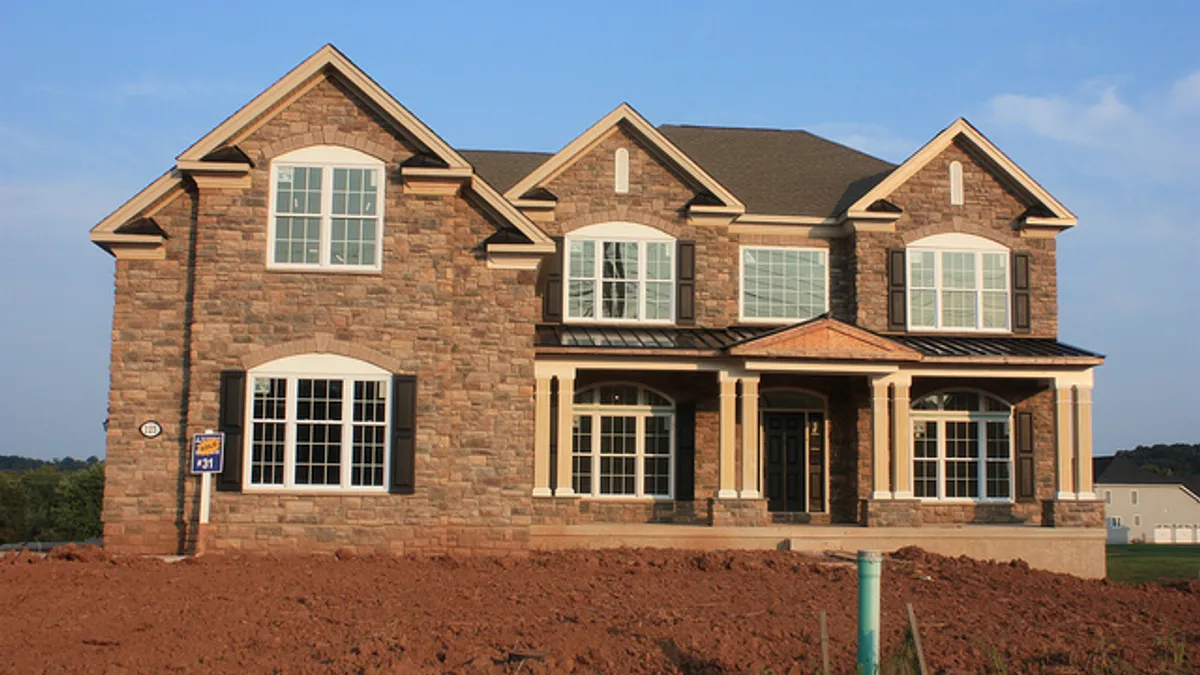When 500 pounds of drywall at a job site in Edwardsville, IL, shifted and fell on a homeowner’s leg, the result was three surgeries, lost wages and medical costs — plus a lawsuit filed in April 2014 for pain and mental anguish.
A year later, a dentist checking on the construction progress of his house on Washington’s Mercer Island suffered fatal injuries when a wall fell on him. He had jumped in to assist the crew when a wall being raised began to slip.
And if you think homeowners have some inherent understanding of construction, consider the person who thought a temporary diagonal wall brace must have been there by mistake and almost removed it when he visited his site after hours.
The excitement of watching their dream home take shape can spur regular visits to the site. Add to that the not-uncommon belief among owners that they have the right to be there, along with the appeal of making last-minute design changes, and contractors are left to walk the line of managing risk while appreciating the homeowner’s investment.
After all, homeowners often don’t see the hazards present. “In fact, what draws their interest may be exactly where you don’t want them to be,” said Lari Kippen, director of heavy construction services at OSHA Environmental Compliance Systems (OECS), a safety consulting firm based in Bloomington, MN.
Setting expectations with owners early about job site access and ways they can safely check up on the project’s progress is critical.
Knowing the risk
Construction job sites are dangerous. The U.S. Department of Labor’s latest release on fatal occupational injuries notes 937 such incidents in the private construction sector in 2015. Although the figure is not restricted to homebuilders, these were construction professionals who understood the risks of the job. Most enthusiastic and often-distracted homebuyers don’t.
Homeowner accidents or fatalities on a job site aren’t all that common, and Kippen said he’s not aware of many. But they do happen. And the developer or contractor carries the risk of everyone’s safety until the owner takes possession of the house at closing.
The Occupational Safety and Health Administration’s employee rights mandate protects the worker, not the homeowner. While workers’ compensation has a limit to liability, Kippen said, the homeowner would be covered by the contractor or developer’s insurance. A jury will almost always award the injured party, even if it’s not the contractor or developer’s fault, he added. Plus, if a homeowner does get hurt on site, the project team must show it made all attempts necessary to maintain a safe environment.
Educating the homebuyer
Keeping visitors safe starts with understanding what they know — or perhaps more importantly, what they don’t.
For most people, building a home is a once-in-a-lifetime experience, so any knowledge of or instruction in safety usually comes from the developer or contractor. For the protection of visitors, the crew and the builder, job site policies must be put in place and followed.
PulteGroup has made that education a part of the sales process, using the project contract to review and enforce safety requirements with buyers, according to Sarah Garlick, a corporate communications specialist with the company.
“Keeping our homebuyers safe is our priority,” she said. “They’re welcome to visit their job site, but we ask that they schedule their visits so that a member of our construction or sales team can escort them.”
The threat of injuries can come from all directions, including what can fall from above, what might be stepped on below, and the most typical of job-site accidents: falls. “Our sales contract is very specific as to the dangers posed on a construction site,” Garlick said. The customer’s signed contract states that they agree to abide by the company’s rules regarding visiting an active construction site. Pulte buyers must get permission to visit a site and be accompanied by a company representative. They also must wear hard hats and closed-toe shoes while visiting areas under construction.
Jake Lee, production manager for Minneapolis-based Gonyea Homes & Remodeling, says his company has its buyers sign a disclosure that acknowledges access during construction will be limited, due to liability insurance requirements. Their policy doesn’t allow clients to access the home prior to railing installation, and visits must be arranged with the project manager.
A simple checklist
Here are five tips to help keep buyers safe when they visit the job site.
- Continually emphasize the importance of safety by reminding customers early and often of the inherent danger of construction sites and advise against visiting alone, Garlick said.
- Guide homeowners on the site tour to manage their exposure to any situation that could post danger to them or the crew.
- Coordinate the visits with what’s happening on site that day. For example, having visitors present when trusses are being set poses the risk of them inadvertently walking underneath the activity.
- Ensure visitors comply with the rules regarding appropriate attire for the job site. PulteGroup requires hard hats and closed-toe shoes. At minimum, Kippen said, visitors should be required to wear hard hats and safety goggles.
- When possible, lock doors so owners (or even just passersby) can’t access the site off-hours.






















